By Briar Pomana
There’s not much that can’t be fixed with a good cup of tea and a chat with the Aunties. A kitchen table with an assortment of slices and a few sprawled packets of biscuits is a common occurrence in ngā kainga Māori.
Women with loud laughs and tales that stretch over the entire afternoon bring with them comfort and languages rarely heard elsewhere. This is very much the vibe of He Kākano Ahau: Wawatatia episode one.
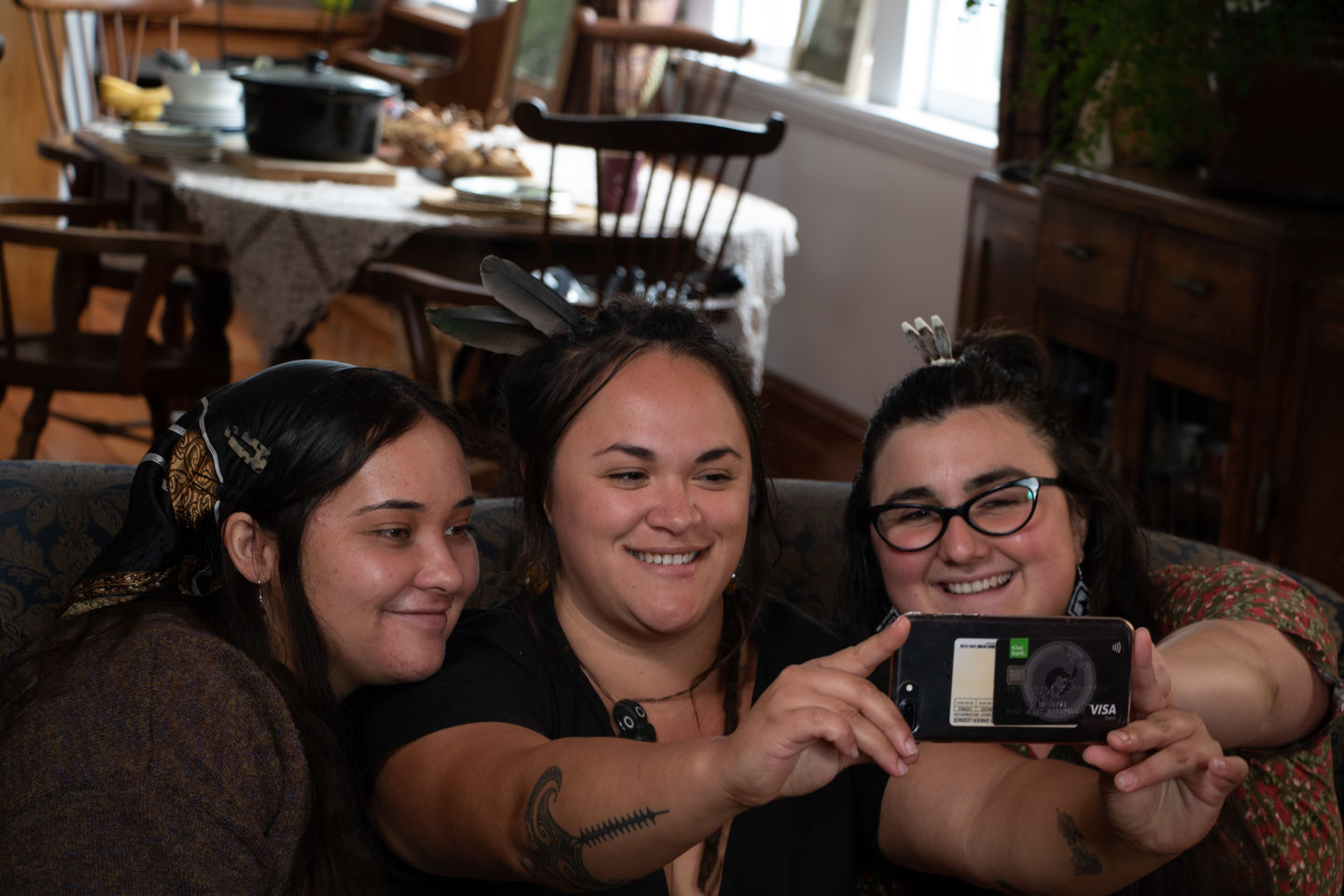
Kahu, Khali and Ruby on the couch Photo: UGP / Jessie-Lee Robertson
Khali Materoa, Ruby Solly, Ariana Tikao and Te Kahureremoa Taumata make up the taonga puoro collective, Maianginui. Their mahi revolves around reclaiming and re-centring mana wāhine and atua wāhine, many of whom have been disregarded or forgotten altogether as a direct result of colonisation.
Episode One begins with three of these wāhine as they take listeners on a journey of meditation and re-indigenisation through the art of whakapapa, storytelling and taonga puoro.
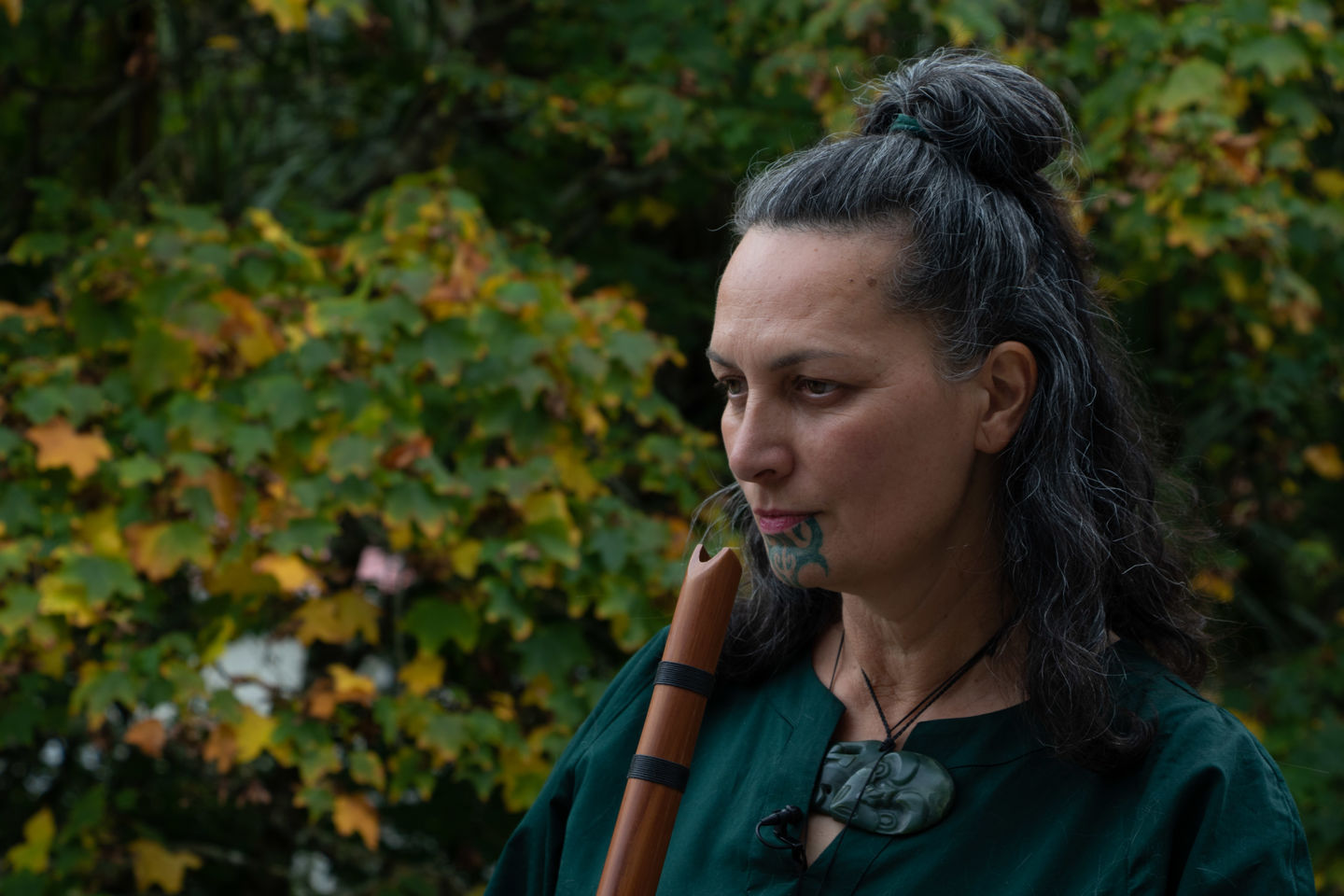
Ariana Tikao Photo: UGP / Jessie-Lee Robertson
So we begin the season in Te Whanganui-a-Tara where Maianginui, formed in 2020, are decolonising the way we interpret many of our pūrākau and narratives using and surrounding taonga puoro.
These traditional instruments made from wood, stone, clay, bone and other naturally derived materials were once habitually used for a range of purposes until the 1907 Tohunga Suppression Act brought about their near disappearance.
It was not until the mid-1980s that another collective by the name of Haumanu, composed of jazz musician, Richard Nunns, carver and instrument maker, Brian Flintoff and esteemed Ngai Tūhoe musician, and composer Hirini Melbourne revived the silenced art of taonga puoro.
Haumanu travelled across the motu, speaking with people who could recall any snippet or memory they had of taonga puoro.
“The way they went around and talked to kaumatua and gathered up the stories from the people, it’s a pretty remarkable story really,” Ariana Tikao of Maianginui says.
“I find it quite interesting that it was both Pākehā and Māori involved as well and that we have these allies that have supported the tāonga to come back. It’s because of them dedicating decades of their lives that we are in the position we’re in now.”
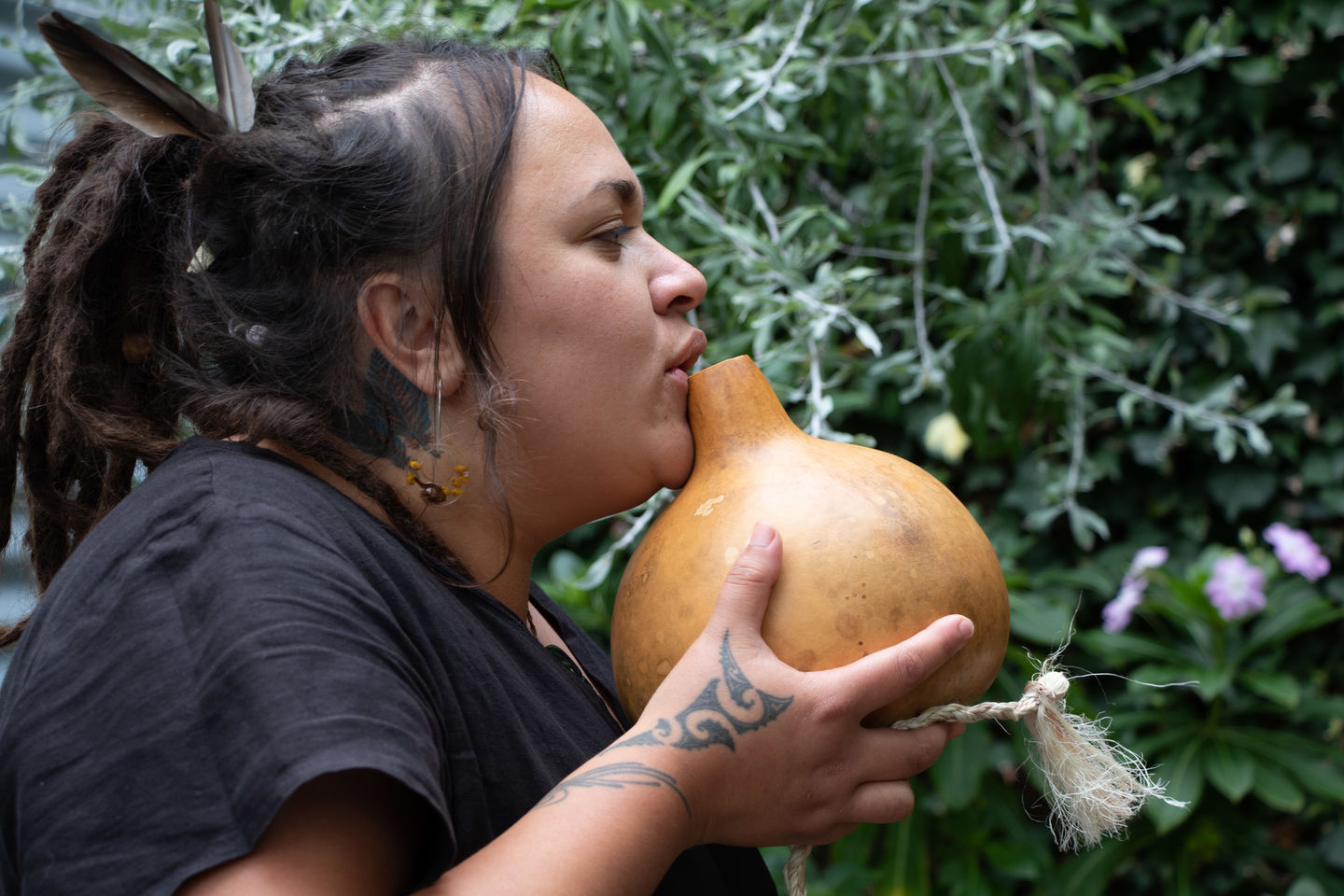
Khali playing in her garden Photo: UGP / Jessie-Lee Robertson
When He Kākano Ahau first reached out to Maianginui regarding this season of the podcast, the collective were preparing for a performance with the Auckland Philharmonic Orchestra for the Auckland Arts Festival, however, due to COVID-19, this event was cancelled.
The collaboration between classical music and taonga puoro is a sphere Ruby Solly often works within.
She remembers the kōauau from primary school and is classically trained on the cello. She now combines her knowledge of these instruments in her mahi as a music therapist and an artist.
Ruby jokes about growing up a little Māori girl feeling she didn’t fit the mould, and now she continues to disrupt and decolonise these predominantly Pākehā spaces by integrating taonga puoro to her practice.
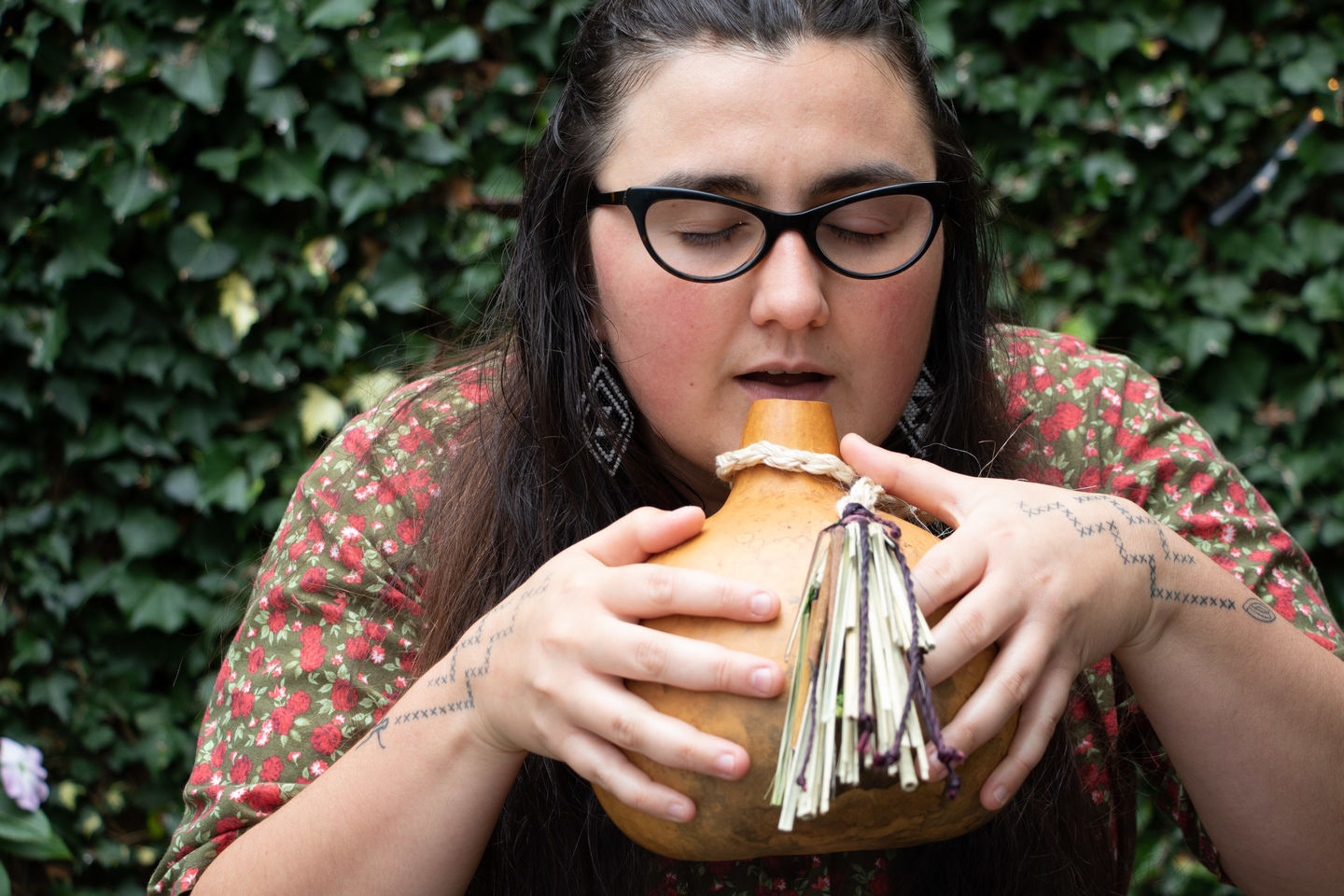
Ruby playing taonga pūoro Photo: UGP / Jessie-Lee Robertson
“These are the original classical instruments of Aotearoa, this is the original classical music of Aotearoa, the original folk music of Aotearoa is Māori music,” says Solly.
Music from Solly’s album Pōneke is featured throughout this season of He Kākano Ahau; Wawatatia.
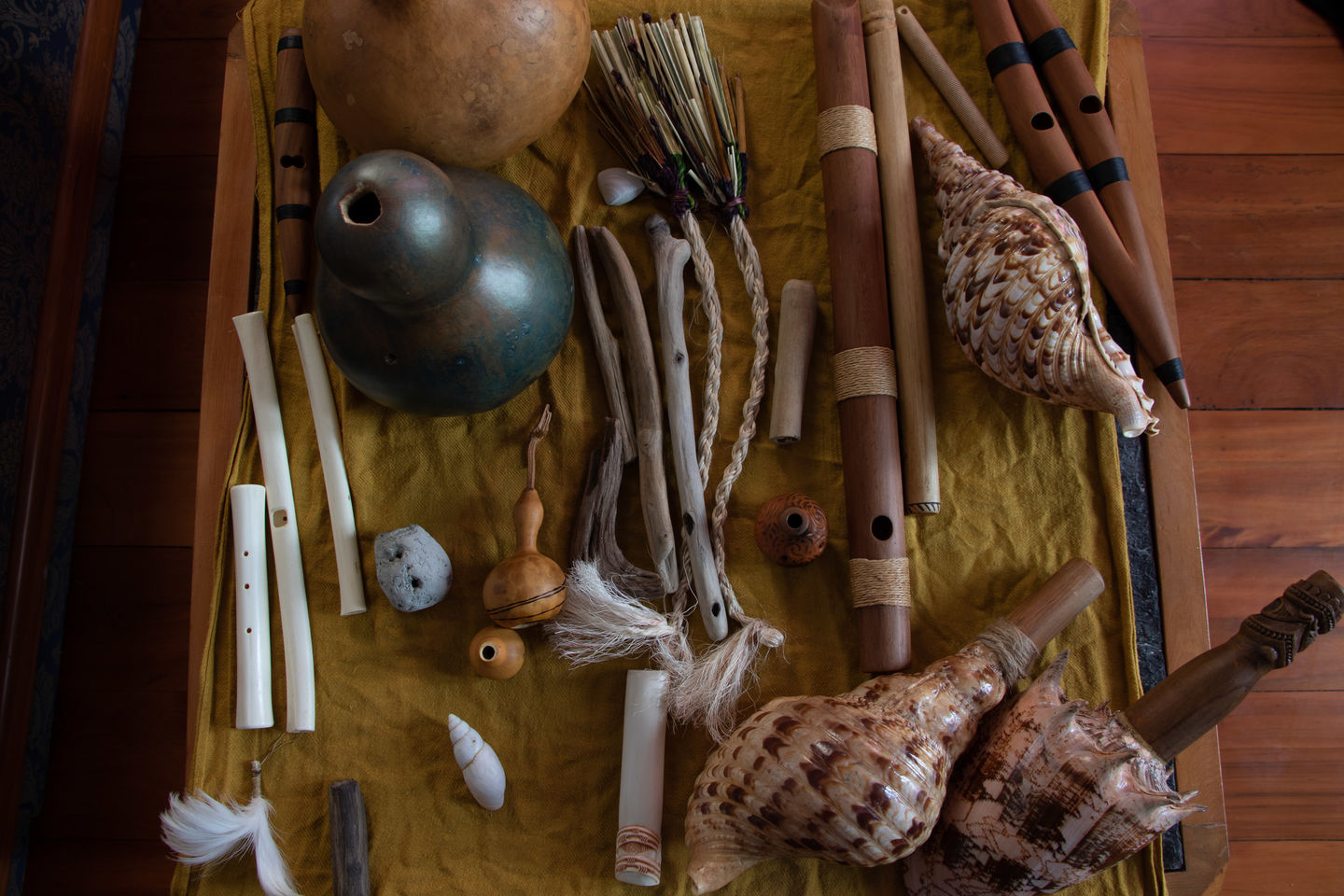
A taonga puoro collection Photo: UGP / Jessie-Lee Robertson
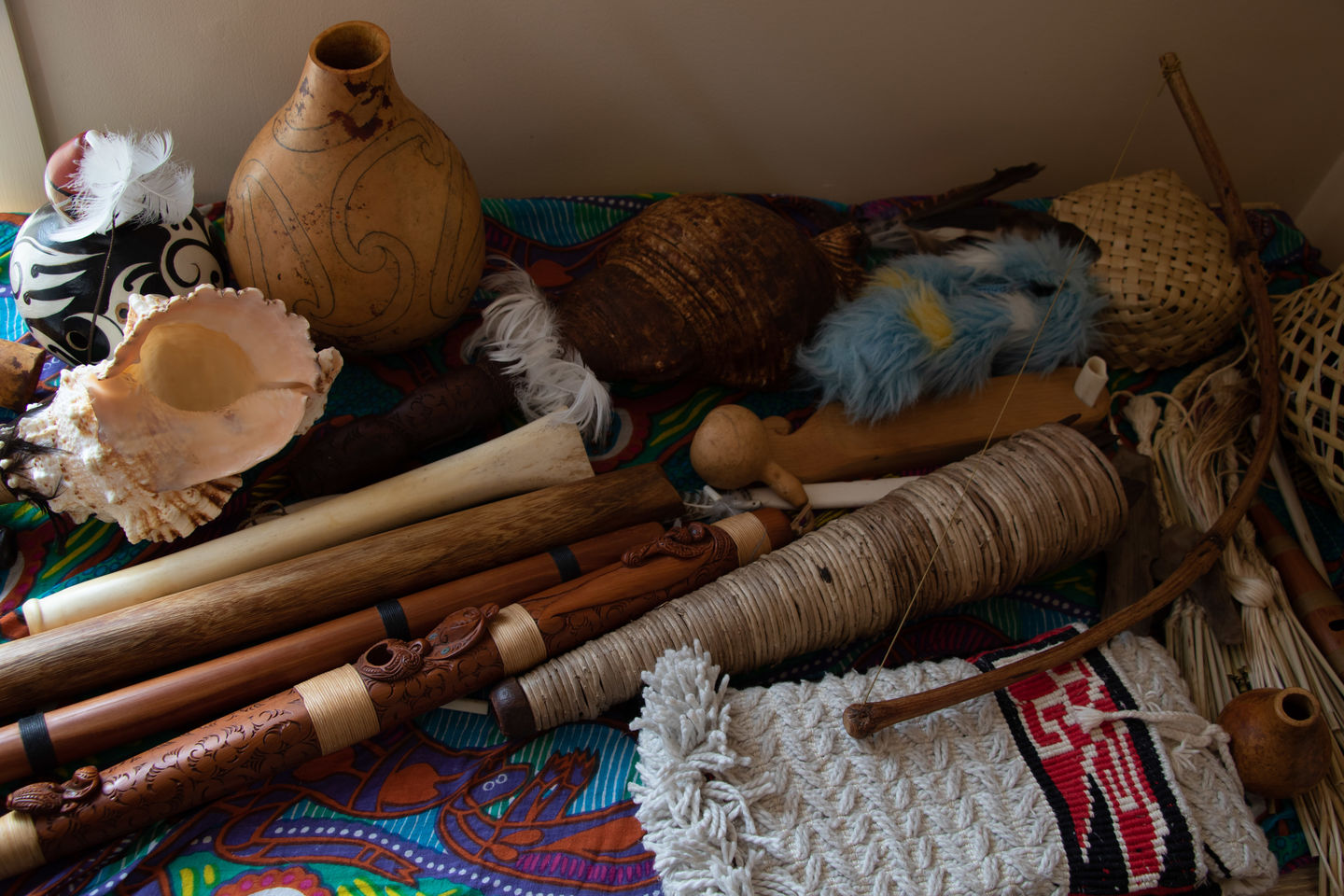
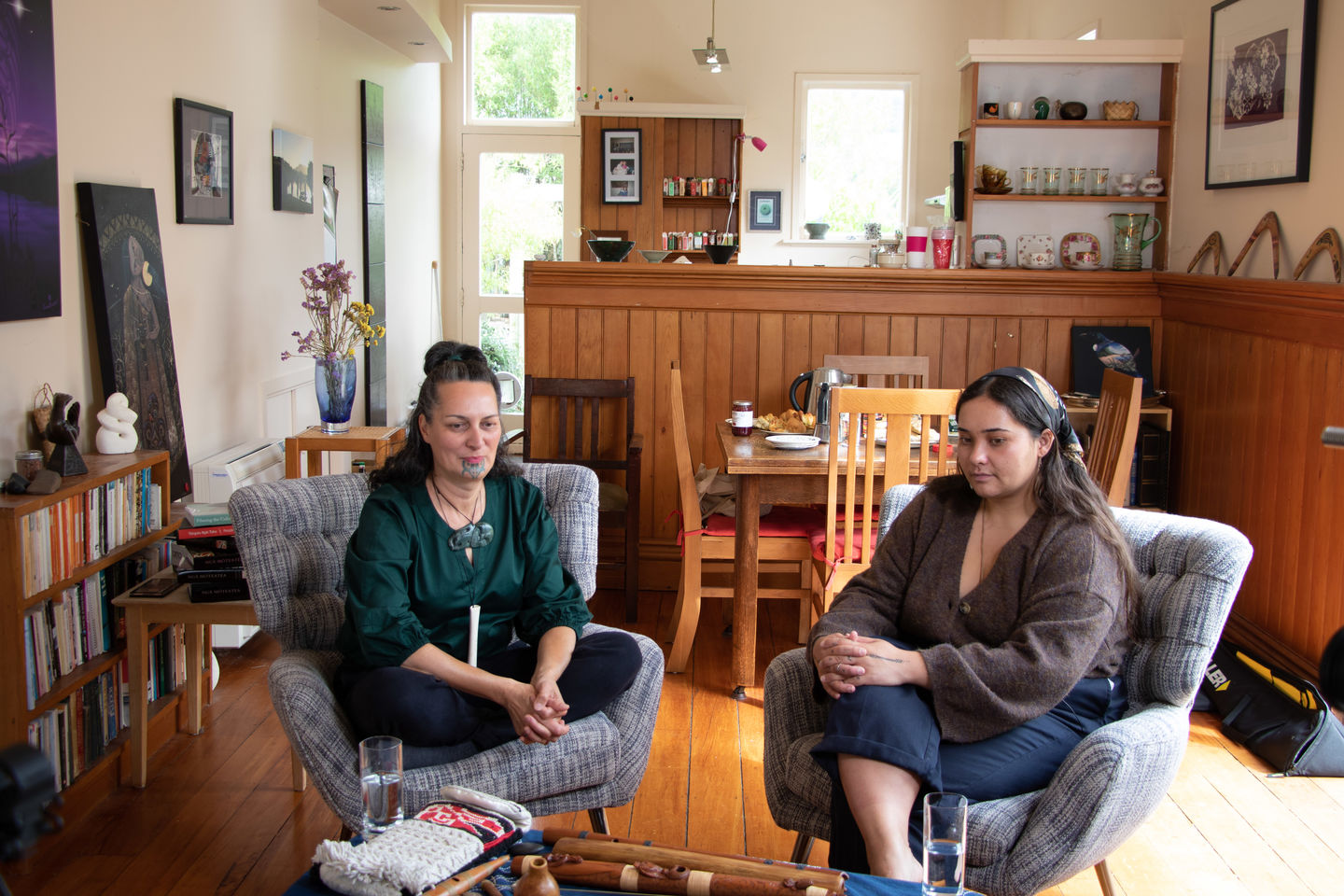
About He Kākano Ahau:
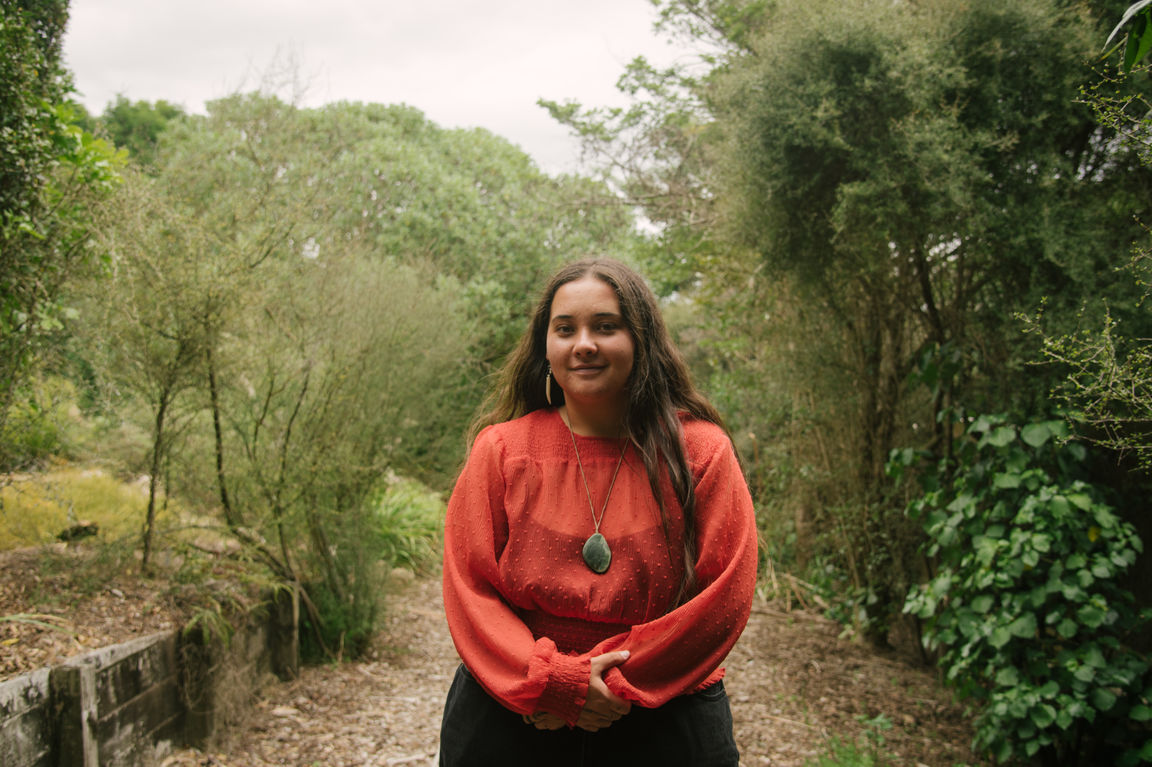
Kahu Kutia Photo: UGP / Dylan Cook
May we boundlessly dream of possibilities beyond our wildest imaginations. May we weave communities of support, compassion and active solidarity. With our history in front of us, and our tūpuna at our shoulders, may we walk into a future that is connected and thriving for us all. This is He Kākano Ahau Season 2: Wawatatia.
After co-winning Best Episodic/Recurrent Podcast at the 2020 Voyager Media Awards, activist, writer and uri of Ngai Tūhoe, Kahu Kutia returns with season two. She leads a close-knit team across the motu in search of stories woven together by whakapapa and desire to be and exist bigger and better.
This season’s creative team also includes producer and editor, Melody Thomas, of the award-winning sex and sexuality podcast BANG!, journalist, producer and editor Frances Morton continues with He Kākano Ahau alongside producer and award-winning filmmaker Ursula Williams as the podcast’s executive producers. Te Hira Mayall-Nahi (Ngāti Whatua ki Kaipara, Te Rarawa) and Briar Pomana (Ngāti Kahungunu, Ngāti Rakaipaaka), came on board in teina roles to assist with production.
He Kākano Ahau: Wawatatia is a seven-episode series, including two episodes in te reo Māori.